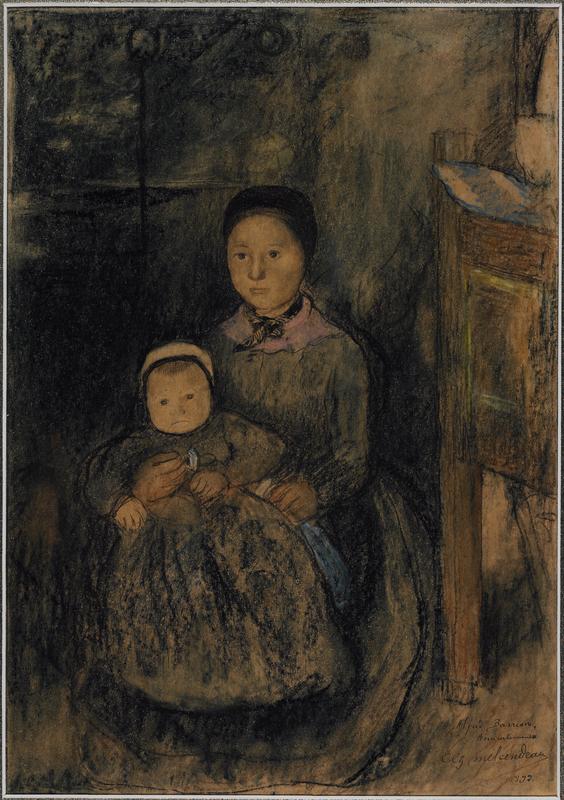
134. Charles Milcendeau, Two Young Vendean Girls in an Interior
| Artist | Charles Milcendeau, French, Soullans, Vendée 1872–Soullans, Vendée 1919 |
| Title, Date | Two Young Vendean Girls in an Interior, 1899 |
| Medium | Charcoal, pastel, ink, and watercolor |
| Dimensions | 13 × 9 in. (33 × 22.9 cm) |
| Inscriptions + Marks | Lower right: À Alfred Barrion / Amicalement / CH. Milcendeau / 1899 |
| Provenance | Alfred Barrion (1842–1903). Jacques Petithory (1929–1992); [Galerie Fischer-Kiener, Paris, until 1994; to Weisberg]; Yvonne and Gabriel Weisberg, Minneapolis |
| Exhibition History | "The Quieter Image: 19th Century European Drawings and Watercolors," Carleton Art Gallery, Carleton College, Northfield, Minn., 1996, no. 35; "Milcendeau, le maître des regards," Historial de la Vendée, Les Lucs-sur-Boulogne, France, 2012; "Reflections on Reality: Drawings and Paintings from the Weisberg Collection," Mia, 2022–23 |
| References | Christophe Vital, ed., "Charles Milcendeau 1872–1919: Sa vie, son oeuvre" (Milan: Silvana Editoriale, 2012), pp. 18, 289, no. 6, ill. |
| Credit Line | Promised gift of Gabriel P. and Yvonne M.L. Weisberg, Minneapolis |
Charles Milcendeau dedicated this drawing to Alfred Barrion (1842–1903), a pharmacist in Bressuire, in the county of Deux-Sèvres, less than 100 miles from the artist’s hometown. It could have been a commission from Barrion, a major collector of paintings, prints, and drawings.1 These young children could even be members of Barrion’s family, although documentation on this point is lacking. In any case, the doll-like presentation of the subjects suggests a natural, wide-eyed goodness, a trait that may have appealed to the sensibilities of a private collector or a family with children.
The innocent quality of Two Young Vendean Girls marks a more primitive approach than we usually see from Milcendeau, especially in the late 1890s, when most of his works displayed a heightened realism. It is as if, rather than imparting something of his subjects’ lives, the artist wanted their simple, unspoiled natures to come through.
GPW
Notes
At some point, the drawing then entered the collection of Jacques Petithory. A large part of his collection is at Musée Bonnat, Bayonne, France. See La donation Jacques Petithory au Musée Bonnat, Bayonne: Objets d’art, sculptures, peintures, dessins (Paris: Réunion des Musées Nationaux, c. 1997). ↩︎